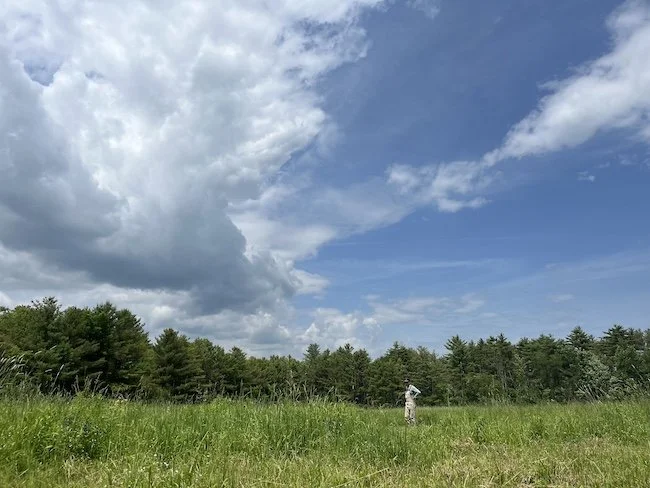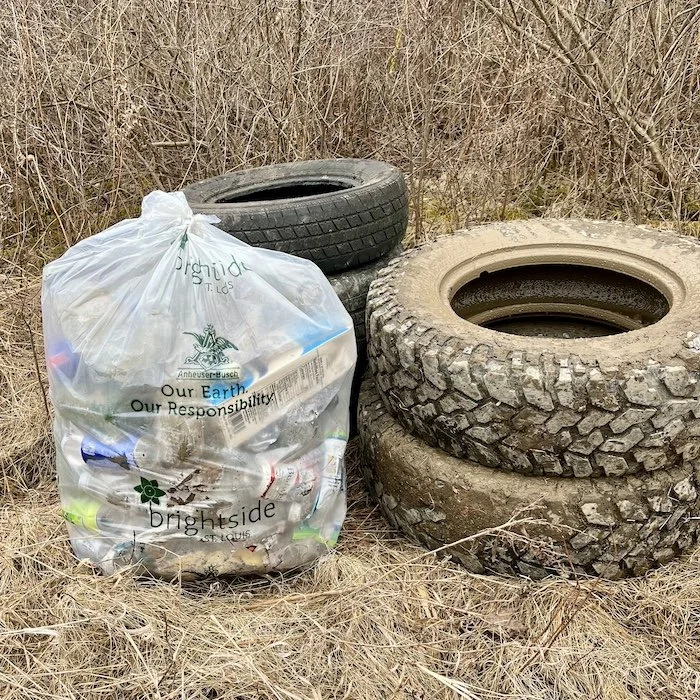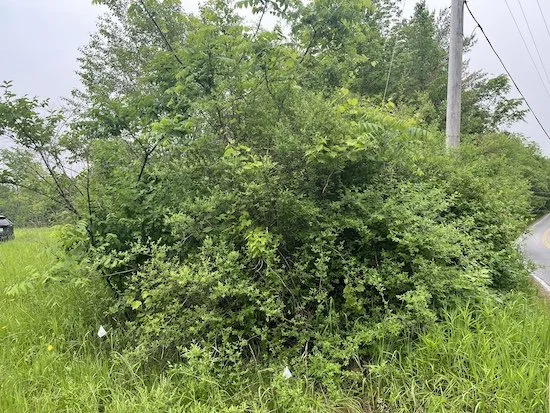
What’s in a Farm Name?
July 15th, 2025 - The Gerhardt’s
Last week some of Sarah’s family visited our farm for the first time, bringing our little niece with them. We were overjoyed to see her uninhibitedly running down the meadow path we cut toward the forest, enamored by all the different flowers, learning each plant from Jason as she went. When we returned to the meadow from a brief forest walk my cousin asked, “does your property have a name?” At first we pondered what to say. It doesn’t feel right bestowing a name on this land being so new to it, but when we realized the heart of the question we proudly replied, “Earth Tender Farm.”
This name encapsulates many things for us. First, as the name of our farm business, we want people to get a sense for who we are and what we’re doing as farmers, without having to rely on questionable identifiers like “organic.”
In addition, caring for this land is not about owning property as much as about taking responsibility for a piece of this beautiful planet and the effects of our lives upon it. With this land we will be careful and intentional. Tender, in fact.
Jason being Jason, which is to say, always noticing
The land itself is also tender. When the soil is held in hand it’s easily malleable and silky smooth when pressed between the fingers, what soil scientists call high plasticity. When walking barefoot the ground receives footsteps like a well oiled baseball mitt fits the only hand that has ever known it. The texture of the soil literally shapes itself to the weight of the foot. It gives.
Our farm name also means something deeper for us. Cultural traditions around the world abound with the idea that the role of the human species on Earth is to steward life so that it may continue to flourish. This role goes by different names like steward, protector, caretaker, guardian, and custodian. We like the term custodian (thanks Tyson Yunkaporta for your book Sand Talk) because there’s a whole lot of mess to be cleaned up, and this land is no different. What feels even more invitational however, is the term tender. We are here to be tenders of land and life systems. After all, we’re just borrowing some space and time here, one chapter in the long saga of life interacting on these 11.3 acres throughout history. We just want our interaction to mean something.
On our first day tending the land this March we spontaneously walked the length of east creek and began the task of cleaning up trash that accumulated. Being directly connected by water to Lake Champlain, one of our main goals is to work toward watershed health. For us, that starts with cleaning up. We spent some hours filling up trash bags and rolling out old tires, and in April we did the same thing along the big bouldery brook to the north. After that, the vegetation was too thick to see what remained, so we have to re-tend to this task after leaf fall now, perhaps for the rest of our lives.
Some of the gathered trash from our farm
We’ve been doing some tending in the forest too. After the plants began to leaf out, Jason took note of who was waking up earliest. The forest had an understory of Honeysuckle, Buckthorn, Barberry, Daphne, and Autumn Olive dominating the shrub layer of the forest architecture. All of these species are considered “invasive,” though we don’t necessarily think that way. Why these shrubs are popularly demonized is because they are the first to leaf out and the last to drop leaf, effectively blocking sunlight from the forest floor for other plants to grow and reproduce.
This leads to native plant biodiversity loss, lack of canopy species replacement, and makes the land prone to topsoil erosion by reducing the cover on the forest floor. If we can do something to improve this condition, we will. Regardless of right or wrong, it’s simply hard to live in an ecosystem that could use our tending, and choose not to.
Jason doing his Zizyphus impersonation
You can’t always do something about it though. If this farm were hundreds of acres, we’d have to accept a new reality. The work to restore would be too great for the two of us. On Earth Tender Farm we can manage it, however. There’s just over 8 acres of forest, so we actually can tend this landscape to avoid soil loss and retain many of its native species. We can see the forest process holding strong in the Red Spruce under White Pine and the Sugar Maple and Oak under Aspen. The forest wants to continue its succession process, seemingly waiting for people like us to amble along and partner by clearing the way to the sun for the next canopy species. The land tells us how to tend.
There’s a lot to wrestle with in this process of being an Earth Tender too. It’s not so simple and clear cut. The above foray into the forest dynamics on our farm is only part of the story. If you stick around this blog you’ll get more and more details filled in. Our bigger hope is that you’ll stay with us because our work inspires, that onlookers hear the call of earth tending for themselves, seeing how intellectually, emotionally, and physically stimulating it is to return our attention to the land under our own feet.
Before/After tending by the road
If nothing else, our farm will be one of the tended islands amidst a 6.1 million acre (that’s how big the Adirondack Park is) landscape undergoing dramatic species shifts in the centuries ahead. Our feelings are that we need such islands to help us all remember. In one sense to remember what we’ve lost when and if indeed we’ve lost it, and in a deeper sense to remember that we’re actually here to tend life. Individually, we do have some modicum of choice. Collectively, there’s even more potential. So if you read this far, that’s the final reason for our farm name—perhaps you’re an Earth Tender too. We intend to help you remember.
Until next time,
Jason and Sarah
East creek looking lush late Spring





